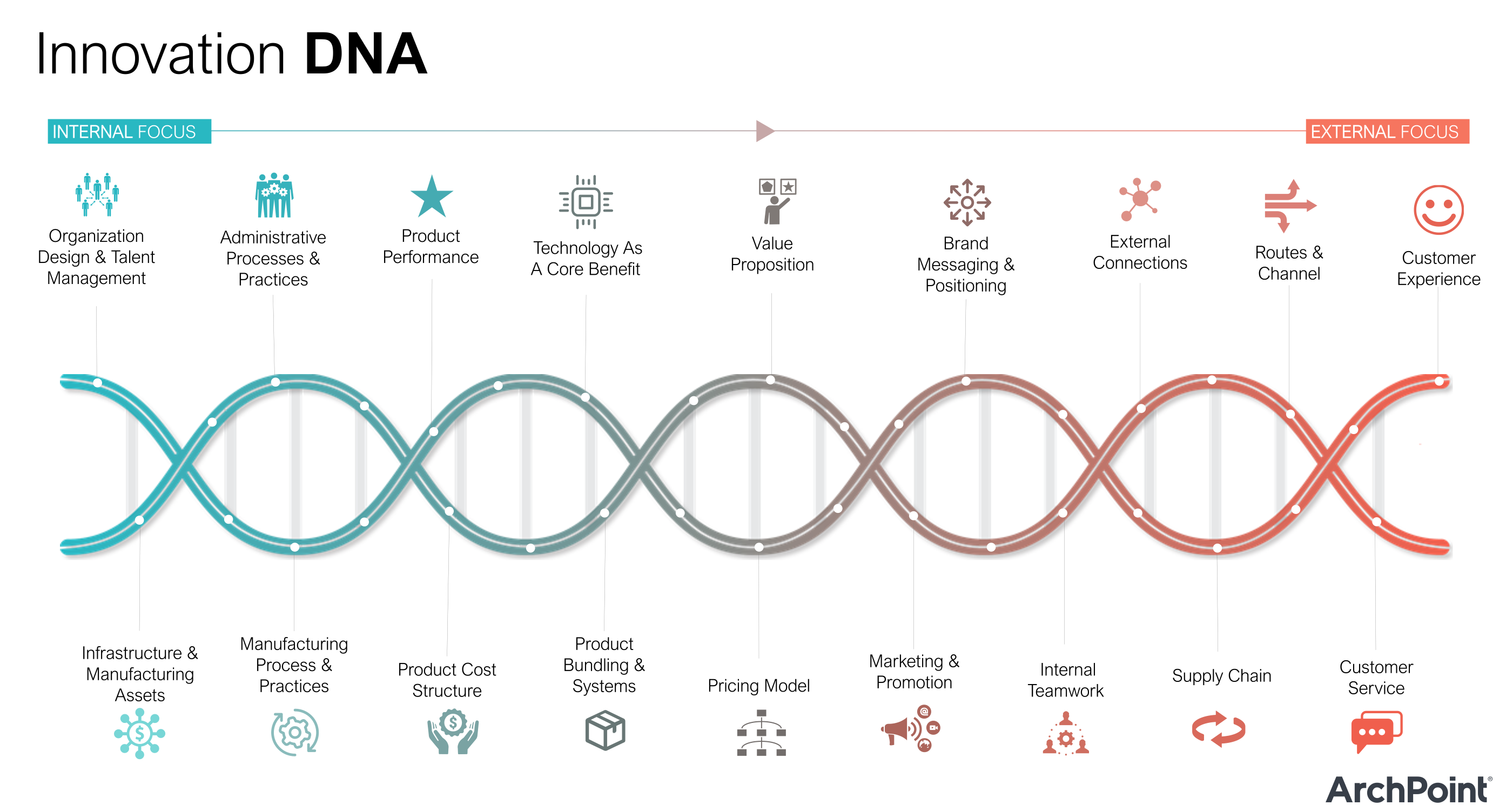Contrary to popular belief, innovation is rarely a case of something totally new popping into an inventor’s head – it’s iterative. Gutenberg’s invention of the printing press pulled together existing technologies that already included the screw press and moveable type. Likewise the automobile, the assembly line, and interchangeable parts all existed before Ford instituted the moving assembly line to drastically reduce the time and cost of producing a car.
In fact, one of the most creative geniuses of all time, Shakespeare, was also a businessman under constant pressure to come up with new material for the group of touring players he co-owned. As a result, he became a master at building on others’ work. Of the 27 comedies and tragedies he wrote, only two had original plots. The others borrowed plots from published chronicles and other playwrights, with Hamlet coming from a Scandinavian folk tale, Romeo and Juliet from a contemporary Italian play, and King Lear from a play by a competing company of traveling players. Like Ford, Shakespeare substantially reduced the time required to turn out his finished work and built on others’ good ideas to create a superior product.
Another misconception about innovation is that it must be some form of breakthrough. Companies often realize significant returns on process innovations that are incremental in nature. For example, they may improve collections processes, structure better approaches to handling customer complaints, or remove unnecessary layers of approval.
Potential areas for innovation
When companies think of innovation, they tend to think first of product innovation. But innovation in other areas along the value chain is critical and often leads to greater, more sustained payback.
IKEA is a Swedish-founded, Netherlands-based multinational corporation that pioneered the idea of selling affordable, flat-pack furniture. The company has 389 stores worldwide, does $45.1 billion in retail sales annually, and introduces around 2,500 new products to customers each year. Its major innovations have been in the areas of marketing/messaging and asset management. IKEA decided it was not selling individual pieces of furniture but a “look.” As a result, instead of having separate display areas for beds, sofas, and tables, IKEA stores feature fully furnished rooms where not only the major pieces of furniture but lamps and wall-hangings have a singular look.
IKEA also innovated in its supply chain processes when it decided not to assemble its own furniture but make the parts available for customers to put together. This not only cut manufacturing and storage costs but reduced shipping fees.
Product innovations are necessary for almost every business, but they can have shorter-lived advantages, depending on the type of product. Process innovations like IKEA’s are often harder for competitors to copy. They can’t be reverse-engineered. And they can produce as many benefits as product innovations if identified and executed properly.
ArchPoint Innovation DNA Model
The way a company moves products and services from raw materials or ideation through to commercially viable products or services follows a flow/chain of activities that when combined produce the value of the company. We call this the company value chain. Through research and practical experience, ArchPoint has mapped companies’ value chains across multiple industries and business segments to identify 18 areas where other companies and industries have produced innovation.
Our Innovation DNA Model highlights those areas to structure the value chain from internal opportunities to external opportunities for innovation.

The idea behind the model design is to expand the definition of innovation beyond products. It is arguable that most organizations innovate at two to three points in the value chain that gives them a competitive advantage, but few companies have rethought or leveraged the entire chain to create enterprise-wide innovation. Amazon is a good example of a company that has truly innovated from start to finish.
Obviously, all innovations are not equally easy to implement. For instance, some are more amenable to low-cost trials and pilot initiatives that, if unsuccessful, can be abandoned without significant impact on current operations.
Think about what’s possible. How can you consider innovating along your value chain to be more competitive?
Key challenges of innovation
Misconceptions about “cultures of innovation” have proliferated in the business world. A recent article in Harvard Business Review argues that a tolerance for failure, commonly understood to be the seedbed of innovation, needs to be balanced with an intolerance for incompetence. Similarly, a willingness to experiment needs to be balanced by rigorous discipline in the selection and design of new initiatives.
Other roadblocks to innovation abound. As discussed in another HBR article, companies can develop a culture about “the way things are done here” that discourages risk-taking and out-of-the-box thinking. Sometimes matrix organizations create a natural barrier for innovation because of the way funds and assets are managed. In many companies, the sheer number of product and delivery capabilities, as in today’s banking sector, make it hard to focus on emerging and disruptive opportunities.
Applying a diverse set of capabilities
Successful innovation can pay enormous and lasting dividends, but it involves more than gathering a number of diverse thinkers in a room with a whiteboard. It requires moving beyond innovation preconceptions to a comprehensive study of potential areas along a company’s value chain, a many-faceted evaluation of each opportunity, careful selection, and then rigorously planned design and execution.
Our experience suggests three calls to action for most organizations:
- Challenge your definition of innovation to move beyond products or services.
- Utilize ArchPoint’s DNA model to explore possible innovation along your value chain and create a pilot.
- Look for ways to build off existing innovation in your industry.
For more insights on innovation from ArchPoint Consulting, see Finding innovation where you least expect it and It’s time to redefine innovation.

